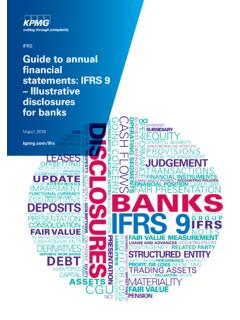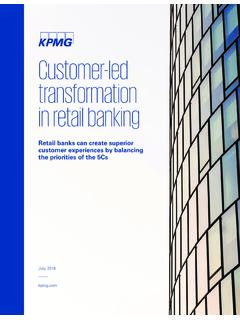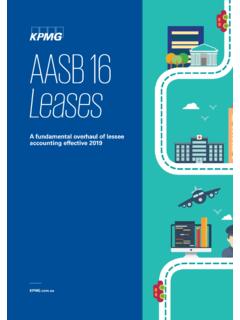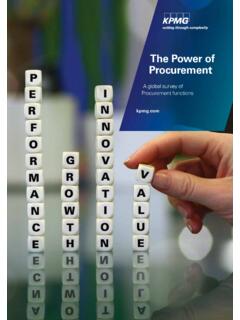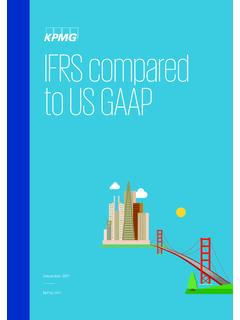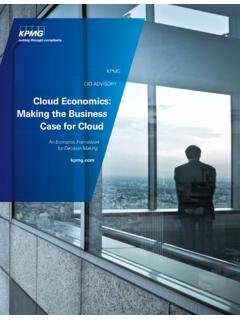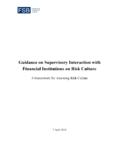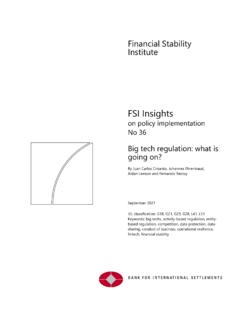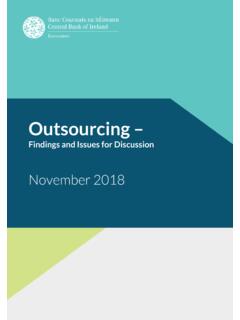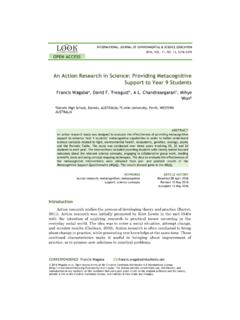Transcription of KPMG Life Actuarial Insights
1 1 / LIFE Actuarial Insights / July 2011 AdvisoryLIFE Actuarial INSIGHTSJULY 2011 Solvency II: An introduction by Leslie Marlo, FCAS, MAAA and Ash RupareliaContentsSolvency II: An introductionPage 1 European Insurance and Occupational Pensions Authority (EIOPA) Quantitative Impact Study 5 (QIS5)Page 5 Think Outside of the Pillars Solvency II Strategic ConsiderationsPage 8On April 22, 2009, the European Parliament approved the Solvency II framework directive, due to come into force January 1, 2013. It offers European insurers an opportunity to improve their risk-adjusted performance and operational efficiency, which is likely to be beneficial for policyholders, for the insurance industry, and the European Union (EU) economy as a whole.
2 As the implementation date draws closer in the EU, Solvency II is not only on the radar of insurance companies in the EU but also on those across the globe. The world is watching to see how the EU transforms its insurance industry and implements risk-based improvements. And while it may seem far enough away, much still needs to be accomplished to accommodate the vast changes and potential impact to insurance companies, governments, and rating agencies within the EU and What type of rippling effect will this have for the United States and other countries outside the EU?
3 Will Solvency II provide European insurers with a competitive advantage in the global marketplace as a result of increased transparency and an integrated view of risk-based capital and performance? Or will the increased solvency capital requirements (as opposed to internal economic capital requirements) prove to be a disadvantage by eroding profits and raising consumer costs? What is Solvency II?The Solvency II Directive is a new regulatory framework for the European insurance industry that adopts a more dynamic risk-based approach and implements a nonzero failure regime.
4 The Directive fundamentally alters the way European insurers measure risk and deploy risk management practices. It emphasizes new capital adequacy requirements, risk management practices, increased transparency, and enhanced supervision. Moreover, it encourages insurance companies to put in place a system of governance and control that demonstrates capital adequacy and tests the validity of risk-based decisions. 1 On June 21, 2011, the European Council issued a revised version of Omnibus II, which contains an anticipated delay to implementation reporting to the regulator prior to that date.
5 To learn more, visit: 2011 KPMG LLP, a Delaware limited liability partnership and the member firm of the KPMG network of independent member firms affiliated with KPMG International Cooperative ( KPMG International ), a Swiss entity. All rights reserved. Printed in the The KPMG name, logo and cutting through complexity are registered trademarks or trademarks of KPMG International. 24502 NSS2 / LIFE Actuarial Insights / July 2011 Similar to the reasoning behind Basel II for the banking industry, the new framework is being implemented, in part, as a result of the previous market turmoil, which highlighted system weaknesses and renewed awareness over the need to modernize industry standards and improve risk management techniques.
6 As a result, Solvency II sets out to establish its new set of capital requirements, valuation techniques, and governance and reporting standards to replace the existing and outdated Solvency I requirements. In particular, the new regime is intended to harmonize the regulations across the EU, replacing the piecemeal system under which different countries have implemented the Solvency I rules in different ways, particularly for group supervision, to a single unified the three pillarsThe European Insurance and Occupational Pensions Authority (EIOPA)
7 Defines three pillars as a way of grouping Solvency II requirements, which aim to promote capital adequacy, provide greater transparency in the decision-making process, and enhance the supervisory review process. This is to be achieved through the implementation of a holistic approach that addresses better risk measurement and management, improves processes and controls, and institutes an a enterprise-wide governance and control structure. As widely noted, Solvency II is similar in structure to the Basel II regulation for the banking industry.
8 Both are based on three pillars that include quantitative and qualitative requirements and market discipline, and include specific components that focus on capital, risk, supervision, and disclosure. However, it is important to acknowledge that banking and insurance are distinctly different industries. Therefore, the implementation process for Solvency II cannot just mirror that of Basel II. Each represents a unique process unto itself as they deal with very different business models and different types of risk.
9 While similarities surely exist, there are considerable differences in the requirements, application, and impact of each is particularly true in Pillar I, with Basel II applying separate models for investment, credit, and operational risks while Solvency II focuses on a risk-based portfolio analysis by applying an integrated approach, taking into account dependencies between risk categories. Furthermore, Basel II concentrates on the asset side, while Solvency II s assessment of capital adequacy applies economic principles on the total balance sheet, , both the assets and 1 addresses the quantitative requirements.
10 This pillar aims to confirm firms are adequately capitalized with risk-based capital. All valuations in this pillar are to be done in a prudent and market- consistent manner. Companies may use either the standard formula approach or an internal model approach. The use of internal models will be subject to stringent standards and prior supervisory approval and enable a firm to calculate its regulatory capital requirements using its own internal 2 imposes higher standards of risk management and governance within a firm s organization.
